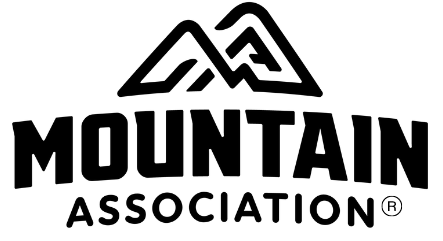Bill Bishop tracks allocation of Recovery Act dollars in rural areas in this great article at the Daily Yonder posted yesterday. His conclusion? “Rural counties and those voting for Barack Obama have received more stimulus money than urban counties and those voting for John McCain. But the differences were small.”
Tracking Rural Stimulus Dollars

Roberto Gallardo/ProPublica
The map shows the distribution of stimulus funding in rural counties only. State capital counties have been taken out, since they receive a disproportionate amount of stimulus money. This is the amount of stimulus funding that has been spent through the first half of this year. To see a larger version of the map, click on it.
Who’s getting rich off the stimulus, the $787 billion federal spending bill Congress passed in February 2009?
Are urban counties slurping up all that money? Or rural?
Are counties that voted for Barack Obama receiving more money than those that sided with Republican John McCain in 2008?
The nonprofit reporting organization ProPublica has put together a database of spending projects paid for by the stimulus package. ProPublica has broken down the spending by county. The database contains information on $350 billion in stimulus money spent through June of this year.
So, we decided to see if anyone seemed to be benefiting more than others as billions of federal money is distributed. (Roberto Gallardo, a research associate at the Southern Rural Development Center at Mississippi State University, conducted the data analysis.)
The short answer is that, yes, some counties have gotten more of the stimulus money than others. But, there doesn’t seem to be much of a pattern when you compare per capital stimulus spending at the county level.
The map above shows the per person distribution of stimulus spending in rural counties through June of this year. Counties in blue have received more stimulus money per capita than the national average. Those in shades of brown have received less per person than the national average. To see a larger version, click on the map.
Are there patterns here? Frankly, there are no common factors that explain why some counties have gotten more stimulus spending than others.
Poor counties aren’t getting more per person than rich ones.
Counties with high unemployment receive slightly less money than those with low unemployment. That’s probably not the way people imagined the program working, but the differences are very small.
Counties that voted for Obama got slightly more than counties that voted for McCain. Again, the differences are slight.
And rural counties have received slightly more than urban counties — but, again, the differences are small.
Much of the stimulus bill spending came in the form of tax breaks. The rest will be spent by government. ProPublica reporters have tracked the spending part of the stimulus bill, allocating as best they can spending to specific counties. The current analysis includes spending through the first half of this year.
Much of the stimulus spending runs through state capitals, however. ProPublica has been unable to allocate all of this money to its eventual destination.
State capital counties receive an overwhelming amount of the stimulus funding, according to the database. For example, Franklin County in Kentucky (home to the state capital of Frankfort) received $44,092 per resident in stimulus funding, according to the ProPublica database. The state average was $1,125 per person. Harlan County, a relatively poor county in southeastern Kentucky, received $249 per person.
(To see how much your county has received in stimulus funding, go here.)
In our calculations, we’ve removed the state capital counties and the $154 billion in funding they have received so far. It was the only fair way to make comparisons.
There are seven state capitals in rural counties. They are Franklin County, Kentucky; Juneau, Alaska; Hughes County, South Dakota (Pierre); Lewis and Clark County, Montana (Helena); Merrimack County, New Hampshire (Concord); Washington County, Vermont (Montpelier); and Kennebec County, Maine (Augusta).
Once the state capital counties are removed from the database, there are differences in how much has been spent from county to county. But the differences are nearly random.
We tested measures of poverty, education and employment, and none of these were statistically relevant to how stimulus money was distributed.
Rural counties received $782 per person in stimulus money, in this revised calculations. Urban counties received $690 and exurban counties received $673 per person.
Counting all but state capital counties, those counties voting for Barack Obama in 2008 have received $726 per person so far in stimulus funding. McCain counties received $676 per person.
The Obama effect was stronger in rural America. Among rural counties only, those voting for Obama in 2008 received $915 per person. Those voting for John McCain have received $734 per person.
Again, there was no strong statistical evidence that any factor played much of a role in how stimulus funding has been distributed so far. Maybe it’s having skilled local leaders, an influential member of Congress or just plain dumb luck. We don’t know.
The groups that analyze federal spending had no comment on how stimulus money was being distributed. A spokesperson for the liberal-leaning Center on Budget and Policy Priorities said experts on stimulus spending were “on vacation.” Moreover, Keri Fulton, a communications specialist, wrote in an email that “we typically don’t examine county-by-county information with regard to the stimulus funds.”
Below is a list of the 50 rural counties that have received the most stimulus funding per person, so far. Some of these counties have few people, so any funding is likely to have a large per capita effect. That’s the reason population-sparse Alaska has such a high per capita rate of stimulus spending. Seven Alaskan communities are among the 50 highest per capita recipients of stimulus funding.
Los Alamos, New Mexico, scores high, presumably because it is home to the Los Alamos National Laboratory and has benefited from increased research funds.
Similarly, several counties with colleges or universities are among the top 50 counties in spending. Clay County, South Dakota, is home to the University of South Dakota and Athens County, Ohio, is the location of Ohio University.
Here is the top 50:






